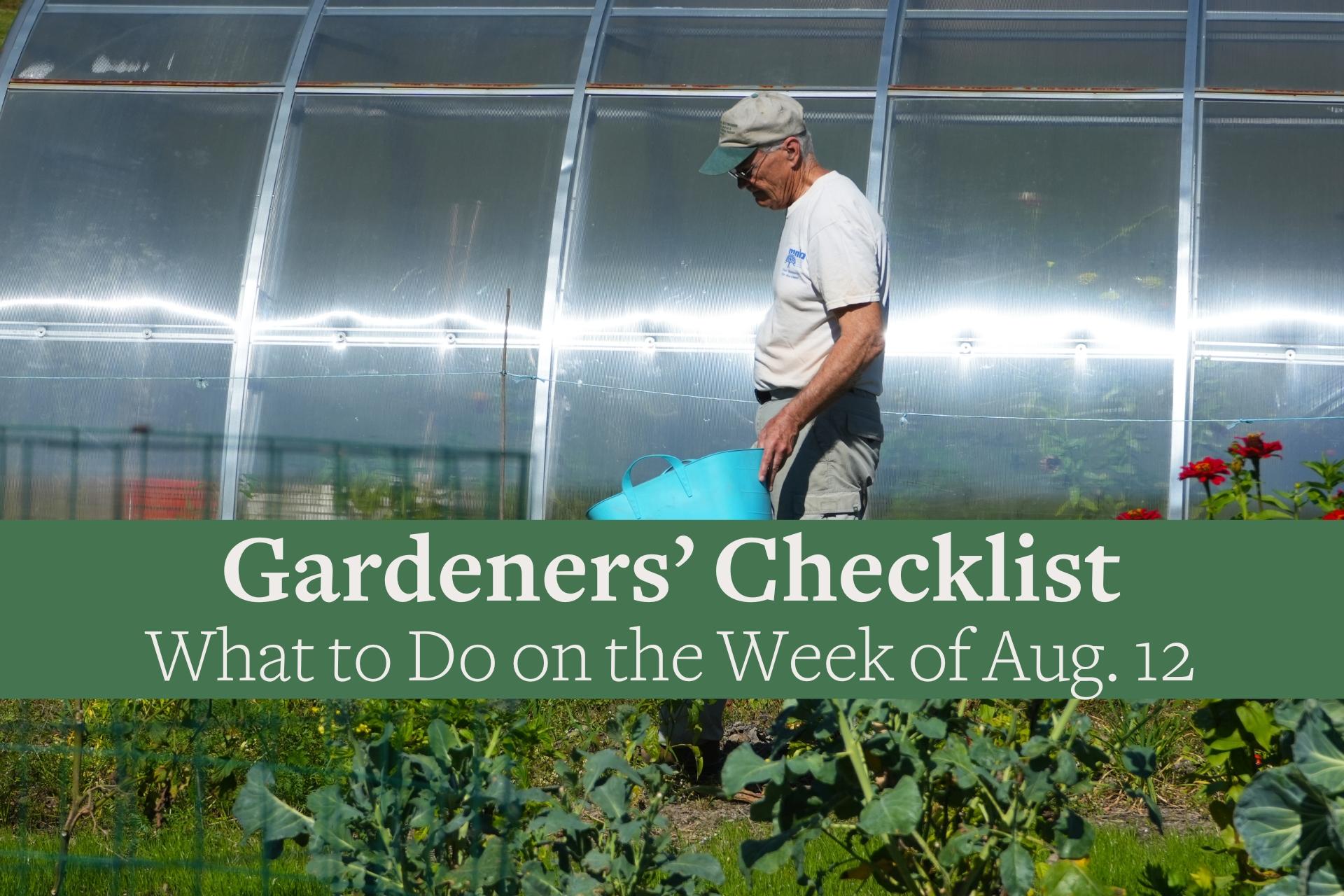You are here
Gardeners Checklist: Here Is What to Do on the Week of Aug. 12
Gardeners Checklist: Here Is What to Do on the Week of Aug. 12
By Ron Kujawski
* Collect some seeds from lupines. Since lupines do not transplant well, sow the seeds directly into a flower border or into a meadow garden. Germination rate of lupine seeds can be improved if they are placed in a freezer for several days, or if individual seeds are nicked with a file.
* Cut back the foliage of Oriental poppies (Papaver orientale) just before digging, dividing and transplanting. These poppies may be divided or moved anytime from now through early fall.
* Do not prune trees and shrubs now except to remove dead, damaged or diseased stems and branches. Pruning often promotes vigorous growth. Such growth that occurs at this time of year and later may not harden before onset of cold weather and will be prone to winter kill.
* Carefully wash soil from the roots of garden-grown annuals (e.g., coleus, impatiens, begonias) and herbs (parsley, basil, chives, thyme, tarragon) before potting them up for growing indoors. Use a commercial potting soil rather than garden soil. Isolate the potted plants from other indoor plants for a few weeks until they learn to get along, and to prevent transfer of any pests from the new plants to the older resident plants.
* Cut down the spent canes of summer-bearing raspberries and blackberries as soon as the harvest is completed. Don’t cut down the first-year canes as these will produce next year’s crop of berries.
*
NOTES, NOTES!
“Tomato ‘Pompei’ is very prone to blossom end rot, whether staked or grown in cages. Don’t plant again.”
“Garlic varieties ‘German White’, ‘Spanish Roja’, ‘Music’, and ‘Romanian Red’ yielded the largest bulbs.”
“Okra ‘Clemson’ yielded poorly. Try another variety next year.”
“Crows have been pecking at the fruit of summer and winter squash. Strips of Bird B Gone Flash Tape tied to bamboo stakes effectively deterred the birds.”
“Organic pesticide spinosad was very effective in controlling cabbage worms on cabbage, cauliflower, broccoli, and kale.”
That mishmash of comments is a sampling of notes I recorded in my garden notebook. With some crops already harvested and others either at their peak or yet to be harvested, this is a good time to pause and assess what crops and varieties did well, what did not, what not to grow again, and what particular problems each crop and variety had, if any.
“Why now?” you ask. Well, if your brain cells are as defective as mine, such information as listed above will be lost in the fog shrouding my memory banks come next January when I am compiling my vegetable seed list. So, write it down — now.
Ron Kujawski began gardening at an early age on his family's onion farm in upstate New York. Although now retired, he spent most of his career teaching at the UMass Extension Service. He serves on Berkshire Botanical Garden’s Horticulture Advisory Committee. His book, Week-by-Week Vegetable Gardener’s Handbook, is available here.
Help Our Garden Grow!
Your donation helps us to educate and inspire visitors of all ages on the art and science of gardening and the preservation of our environment.
All Donations are 100 percent tax deductible.


